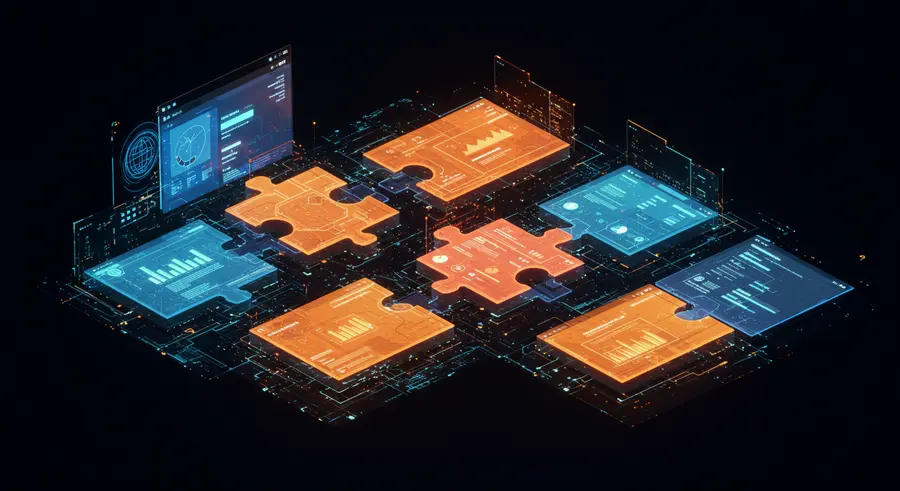Appearance

Welcome, fellow developers and tech enthusiasts! 👋 Today, we're going to unravel the fascinating world of Micro Frontends. If you've been in the web development scene, you've likely heard of microservices, and micro frontends are their logical evolution for the client side. This architectural pattern is revolutionizing how we build scalable, maintainable, and independently deployable web applications. Let's dive in!
What are Micro Frontends? 🤔
Inspired by the microservices concept, Micro Frontends break down a large, monolithic frontend application into smaller, independent, and loosely coupled "micro" applications. Each micro frontend can be developed, tested, and deployed autonomously by different teams, even using different technologies!
Imagine an e-commerce platform. Instead of one giant frontend, you could have:
- A "Product Catalog" micro frontend
- A "Shopping Cart" micro frontend
- A "User Profile" micro frontend
- A "Checkout" micro frontend
These independent pieces are then integrated into a cohesive user experience, often within a shell or a single-page application (SPA) framework.
Why Micro Frontends? The Benefits Unpacked 🚀
Micro Frontends aren't just a trend; they offer significant advantages, especially for large-scale applications and organizations:
- Independent Development & Deployment: Teams can work on their dedicated micro frontend without stepping on each other's toes. This accelerates development cycles and reduces coordination overhead. Deploying a small change to one micro frontend doesn't require redeploying the entire application.
- Emoji: 🚀 Faster releases, less friction!
- Technology Agnostic: This is a game-changer! One micro frontend can be built with React, another with Vue, and yet another with Angular. This allows teams to choose the best tool for the job and embrace new technologies without a complete rewrite of the entire application.
- Emoji: 🛠️ Choose your weapon!
- Improved Scalability: Just like microservices, individual micro frontends can be scaled independently based on their specific needs. This optimizes resource utilization.
- Emoji: 📈 Scale as you grow!
- Enhanced Team Autonomy: Each team owns their micro frontend end-to-end, from development to deployment and maintenance. This fosters ownership and accountability.
- Emoji: 🤝 Empower your teams!
- Easier Maintenance & Upgrades: Smaller codebases are easier to understand, debug, and maintain. Upgrading a library or framework in one micro frontend won't impact others.
- Emoji: 🧹 Clean code, happy developers!
- Fault Isolation: If one micro frontend crashes, it's less likely to bring down the entire application, providing a more resilient user experience.
- Emoji: 🛡️ Build for resilience!
The Other Side of the Coin: Drawbacks & Challenges 🚧
While powerful, Micro Frontends aren't a silver bullet. It's crucial to understand their complexities:
- Increased Operational Complexity: Managing multiple repositories, build pipelines, and deployments can be more complex than a single monolithic application.
- Emoji: 🤯 More moving parts!
- Bundle Size & Performance: If not managed carefully, multiple micro frontends can lead to duplicate dependencies and larger bundle sizes, impacting initial load times. Careful dependency management and shared libraries are essential.
- Emoji: 🐌 Optimize for speed!
- Communication Overhead: While independent, micro frontends often need to communicate. Establishing clear communication patterns (e.g., via shared state, events, or a message bus) is crucial and can add complexity.
- Emoji: 🗣️ Talk to me!
- Styling & Design Consistency: Ensuring a consistent look and feel across different micro frontends, especially when built by different teams with different technologies, requires robust design systems and shared UI component libraries.
- Emoji: 🎨 Stay in sync!
- Learning Curve: Adopting a micro frontend architecture requires developers to learn new patterns, tooling, and deployment strategies.
- Emoji: 📚 New tricks!
Practical Examples & Implementation Strategies 💡
Several strategies exist for implementing Micro Frontends:
- Build-time Integration: Each micro frontend is built and deployed as a separate JavaScript bundle, and a container application orchestrates their loading.
- Run-time Integration (Client-side Composition): Micro frontends are loaded and rendered dynamically in the browser, often using Web Components, IFrames, or JavaScript frameworks that support dynamic module loading.
- Server-side Composition: The server stitches together HTML fragments from different micro frontends before sending them to the browser.
Major companies like IKEA, Spotify, and DAZN have successfully adopted micro frontend architectures to manage their large and complex web applications.
Conclusion: Is it Right for You? 🤔
Micro Frontends offer a compelling solution for building large, evolving web applications that require independent team development, technology flexibility, and enhanced scalability. However, they introduce operational complexity and demand careful planning, robust communication strategies, and a strong emphasis on shared design systems.
Before jumping in, consider your team size, project complexity, and organizational structure. For smaller projects, the overhead might outweigh the benefits. But for large enterprises with multiple independent teams, Micro Frontends can be a game-changer, fostering agility and innovation.
To learn more about how Micro Frontends are revolutionizing web development, check out our related catalogue entry: Micro Frontends: Revolutionizing Web Development.
Happy coding! ✨